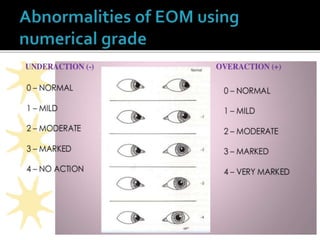

Yes, since BVD symptoms can mimic other conditions, this condition is frequently misdiagnosed. If you experience any of the symptoms listed above, contact an eye doctor near you that may be able to help diagnose and discuss treatment options for BVD. Agoraphobia, dislike of open or unfamiliar areas.Loses confidence in accurately judging distances.Difficulties driving at night or in low light.Difficulties with body-hand-eye coordination.Poor stereo vision or judging distances.Words seem to ‘float’ or merge together.Reduced comprehension or reading fluency.Dim lighting blurry, eg restaurant menu or theatre.Reading or computer are difficult to see clearly.Knocks into shelves when walking down the aisle.Moves over to left or right side when walking.Aches in neck and/or shoulder and back pain.The following symptoms are experienced by many BVD patients Physical Findings: Eye doctors sometimes categorized them to make it a bit easier to understand. The list of symptoms of BVD can feel endless. Doing basic tasks, such as driving a car or reading, can become difficult, due to motion sickness and results in life-changing anxiety and disorientation.īVD can severely negatively impact the quality of life. Symptoms of BVDīVD symptoms can interfere with a person’s ability to function on a day-to-day basis. Call us today: 51 or book an appointment online to see one of our Austin eye doctors.Binocular Vision Dysfunction (BVD) is a condition where the eyes are slightly misaligned and the eyes struggle to send one clear image to the brain.īVD can cause a variety of symptoms such as dizziness, motion sickness, headache, and light sensitivity.īVD can significantly impact the lives of both children and adults and since there is a wide range of symptoms to BVD, this condition is often misdiagnosed as dyslexia or ADD/ADHD. Talk to us about how we can help you maintain healthy vision. Jennifer Catalasan is trained and experienced in diagnosing and treating binocular vision dysfunction.Īt Lakeline NeuroVisual Medicine, we put your family's needs first. Needing to read with a finger as a guide or you’ll lose your placeĭo you find that you regularly suffer from any of these problems? If so, we recommend that you take our BVD Questionnaire immediately, and then reach out to our Austin, TX, eye doctor near you to schedule a comprehensive examination and assessment.Re-reading text over and over to understand it.Images seem to move in your peripheral vision, even when they are still.Closing one eye while viewing objects up-close, including a computer screen.Avoidance of doing tasks that rely on near vision.Being uncoordinated, clumsy, or having problems with balance.If you have binocular vision dysfunction, the two separate images conveyed from your eyes to your brain don’t merge successfully.Ĭertain signs can indicate that you need to visit an eye doctor near you for a BVD assessment, including:

Signs of Binocular Vision Dysfunctionīy definition, BVD is the inability to stay focused on an object with both eyes so that one single image is seen. In comparison, a regular eye exam checks visual acuity for near and distance, as well as eye health.

Presence of any conditions that may affect binocular vision functioning.The diagnostic evaluation for binocular vision dysfunction inspects a range of visual skills that are not checked in a regular eye exam. In fact, it is not uncommon for a person we diagnose with BVD to have been told repeatedly by other optometrists that their vision is entirely “normal.” In the case of children, this misdiagnosis has often led to struggles in school, which eventually cause behavioral problems too.

Standard eye exams are used to diagnose and design treatment for conditions such as nearsightedness, farsightedness, astigmatism, presbyopia, and ocular disease – but they cannot always detect binocular vision dysfunction. The evaluation of BVD is not the same as a regular comprehensive eye exam. For relief from the uncomfortable symptoms, schedule a consultation and eye exam with an eye doctor near you – in our advanced Austin, TX, eye care clinic. At Lakeline NeuroVisual Medicine, our eye doctor is highly qualified and specializes in diagnosing BVD. Diagnosis of this condition can be tricky, because the symptoms vary widely from person to person. The symptoms of binocular vision dysfunction usually include headaches, dizziness, trouble with reading, and disorientation. That’s because they are constantly attempting to achieve clear single-focus vision by correcting the alignment. As a result, a tremendous strain is put on your eye muscles. Most commonly, this misalignment is vertical. Binocular vision dysfunction (BVD) is a condition that involves a misalignment in the line of sight from one eye to the other.


 0 kommentar(er)
0 kommentar(er)
